There’s a wide variety of recycling symbols and codes out there. They feature across our food packaging, disposable products and, in fact, items of almost every material and use case.
These codes are designed to represent information or recycling instructions, for the objects on which they appear, to make it easier for you to know the best way to dispose of them.
Below, we’ve listed the most common recycling symbols, alongside the items on which they’re most likely to appear, and a guide to what each symbol means.
On-pack Recycling Labels (or OPRL)
This group of labels appear on packaging. They can be found across a huge range of packaging types, including everything from plastic bottles to chocolate wrappers.
If the packaging contains multiple components – for example, a plastic container with a cardboard sleeve – there will be multiple symbols displayed.
These symbols are designed to make it easier for customers to determine whether they can – and if so, the best way to – recycle a specific piece of packaging.
They will tell you whether or not it is likely that the packaging can be recycled. In this case, ‘likely’ means whether, based on the average recycling practices of local authorities in the UK, these materials can be recycled.
So, the labels will tell you whether or not this packaging is collected by most UK authorities, or whether it can be recycled at a local recycling centre instead.
The most common OPRL in the UK are:
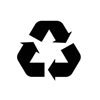
Mobius Loop
The Mobius Loop is the most widely used recycling symbol. It tells you that the piece of packaging can indeed be recycled.
However, just to note, this doesn’t necessarily mean that it will be accepted by all recycling collection systems.

Widely Recycled
This symbol means that the packaging is collected by at least 75% of local authorities around the UK.
The label can also come with instructions or requirements for recycling, such as ‘RINSE’, for example.
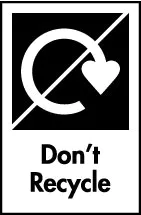
Don’t Recycle
This label features on packaging that is collected by less than 50% of UK local authorities.
However, this doesn’t necessarily mean that it won’t be collected by your local authority, or that it cannot be recycled by your local recycling centre. So, if you know that it is possible to recycle this packaging type, then you might want to check this with these bodies.

Recycle – Rinse
This label informs you that the packaging can be recycled, but that it will need to be rinsed. This symbol commonly features on things like tins and yoghurt pots.
Rinsing packaging is important, as it stops any residual food from contaminating other materials.

Recycle – Rinse, Lid on
This label recommends that you rinse the packaging and then, once rinsed, that you add the lid back on. This is most commonly shown on bottles.
Caps and lids that have a diameter of less than 4 cm are too small to be recycled on their own, because they fall through the screen holes at sorting facilities. So, putting the lid back on the bottle will make it more likely that the lid is successfully captured and recycled.

Recycle with Bags at Large Supermarkets – Don’t Recycle at Home
This label means that, although the product cannot be recycled at home, it can be recycled at recycling points in supermarkets. Most large and local supermarkets have bins for this type of recycling.
This symbol is most commonly seen on plastic wrapping, like fruit bags, chocolate wrappers or bread bags.

Recycle – Bottle Cap on. Don’t Recycle – Remove Sleeve.
This is an example of a recycling label that requires you to split the packaging into its separate components. It is commonly seen on products that have sleeves or films, made with non-recyclable materials.
In this example, you need to remove the sleeve from the bottle, and dispose of it in your household waste. But, you can then recycle the bottle itself, with the lid on.
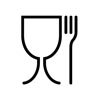
Food Safe
This symbol indicates that the material used in the product is safe to come into contact with food. This is widely displayed on food and water containers, packaging and cutlery.

Tidyman
The Tidyman symbol doesn’t relate to recycling directly. Instead, it comes from Keep Britain Tidy, and acts as a general reminder to not litter, and to dispose of your waste in the correct waste or recycling container.

Recycle Now
Recycle Now – the largest national recycling campaign in England – can be found at recycling facilities across the UK, on local authority recycling vehicles, various recycling literature and recycling containers.
It is another symbol that tells you the packaging can be recycled, and acts as an encouragement for customers to recycle wherever possible.
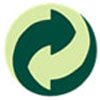
The Green Dot
Although the Green Dot doesn’t necessarily mean that the packaging in question is recyclable or will be recycled.
Instead, it tells you that the packaging’s producer has made a financial contribution to the recovery and recycling of packaging in general.
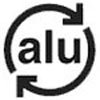
Aluminium
This symbol simply indicates that the product is made of aluminium, and that it can be recycled in an aluminium or mixed metal recycling bin. It is most commonly seen on cans.
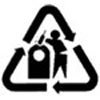
Glass
This symbol indicates that the packaging is made of glass, and that it can be recycled.
Glass bottles and jars can either be recycled in a bottle bank (split into different colours), or through glass household recycling collection.

Paper, Card and Wood
The Forest Stewardship Council (FSC) logo tells you that the packaging has come from sustainably managed forests, and that this packaging has been independently certified by the FSC.
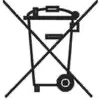
Waste Electricals
This symbol is designed to remind customers that they should not place electrical items in their household waste bin.
Instead, any electrical items can be recycled through either retailers or at a recycling centre.
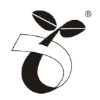
Compostable packaging
This sign is displayed on products that are certified to be industrially compostable. This is in accordance with the European standard EN 13432/14955.
It is vital that you don’t attempt to recycle compostable plastic with your standard plastic recycling. This is because compostable plastic breaks down, meaning it cannot be recycled. And, if it does break down during the recycling process along with regular plastics, it will contaminate the recyclable plastics.
Instead, plastics that feature the compostable packaging symbol can be recycled along with your garden waste.

Home compostable packaging
This symbol means that the packaging can be composted at home. And, as with the compostable packaging symbol, it should not be recycled with your plastics. It is commonly displayed alongside the compostable packaging symbol.
Other Recycling Symbols
These symbols are displayed across a wide range of different packaging types.
They are designed to neatly convey a lot of information, including the best way to dispose of it, whether it can be recycled, and if it’s made of recycled materials.
Below, we’ve listed the main Plastic Resin Codes. These specify the type of plastic resin that was used to make the item. They feature the ‘chasing arrows’ symbol, with a number in the centre.
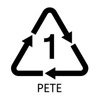
1 PETE
A symbol indicating that the product in question is made of polyethylene terephthalate. Often used for soft drink bottles, and is widely recycled.

2 HDPE
Means the product is made of high-density polyethylene. Often used for cleaning product bottles, and is widely recycled.
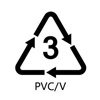
3 PVC/V
Means the product is made of polyvinyl chloride. Often used for food wrapping and plastic packaging, and is not easily recyclable.
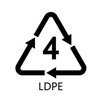
4 LDPE
Means the product is made of low-density polyethylene. Often used for squeezy bottles, and is recyclable at specialist points.

5 PP
Means the product is made of polypropylene. Often used for medicine bottles, and is widely recycled.

6 PS
Means the product is made of polystyrene. Often used for disposable plates, cups, trays and food packaging, and is not easily recyclable.

7 OTHER
Other plastics created from plastic, which does not fall into any of the listed categories. Often used for crisp packets and rice packets, and is recyclable at specialist points.
At EnviroCraft, we are dedicated to protecting the environment and connecting individuals and businesses to sustainable, future-proof waste management systems. Whether it is plastics to be recycled or hazardous waste to be managed, our team offers fast, efficient and affordable solutions.
To find out more about any of our commercial recycling or waste management services, don’t hesitate to get in touch.
The post What Do Recycling Symbols Mean? appeared first on EnviroCraft Waste Solutions.














